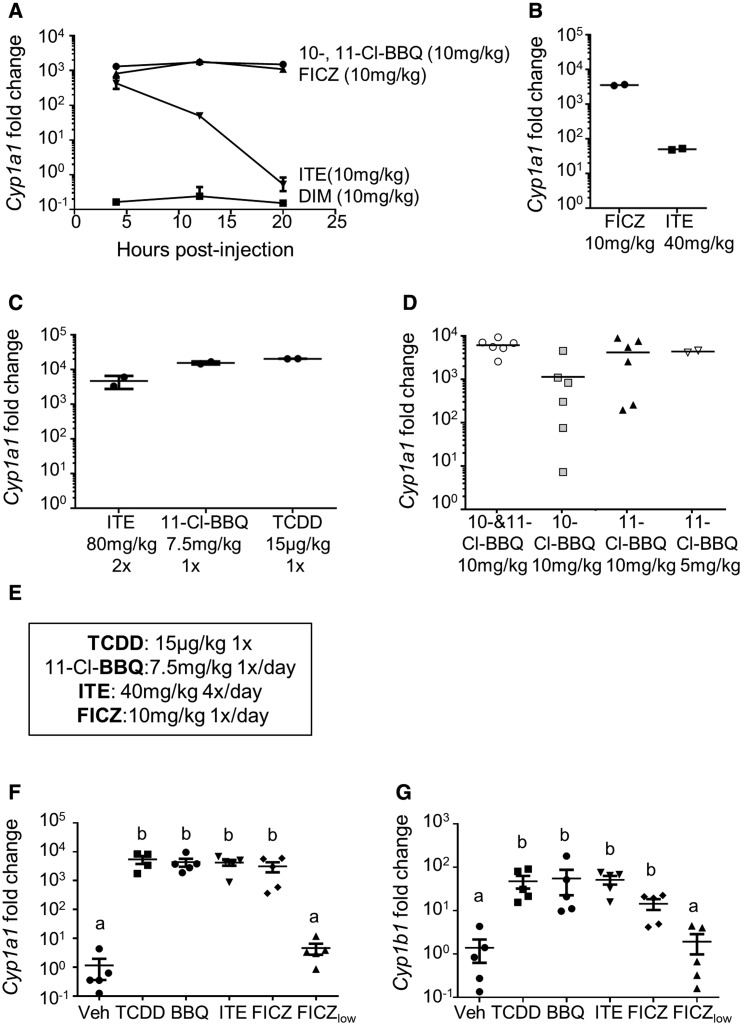Figure 2.
AhR ligand dose optimization. (A–D) Cyp1a1 expression was measured in the liver of B6 mice following i.p. injection of AhR ligands at annotated doses. (A) FICZ, ITE, DIM, or Cl-BBQ (a 35:65 mixture of 10- and 11-Cl-BBQ) was injected one time and Cyp1a1 was measured at 4, 12, and 20 h postadministration. (B) FICZ or ITE was injected 1×/day for 2 days and Cyp1a1 was measured 20 h following the last dose. (C) 11-Cl-BBQ and TCDD were administered one time. ITE was administered at 0 and 12 h. Cyp1a1 was measured at 20 h postadministration of the first dose. (D) 10-Cl-BBQ, 11-Cl-BBQ, or the mixture of both isomers was injected one time, and Cyp1a1 was measured at 20 h postadministration. (E) Optimized doses that led to TCDD-equivalent Cyp1a1 induction. (F, G) Spleen and peripheral lymph node cells from B6 mice were transferred into F1 host mice (day 0). Host mice were treated with optimized doses of AhR ligands: TCDD (15 μg/kg on day 0), 11-Cl-BBQ (7.5 mg/kg on days 0 and 1, BBQ), ITE (40 mg/kg every 6 hours on days 0 and 1), and FICZ (10 mg/kg on days 0 and 1). Treatment with a low dose of FICZ (50 μg/kg on days 0 and 1, FICZlow) was also included. Mice were sacrificed on day 2, and Cyp1a1 (F) and Cyp1b1 (G) were measured in the liver. Cyp1a1 and Cyp1b1 expression were normalized to Actb and fold-change was calculated by the ΔΔCt method using vehicle-treated sample values as the control. Each point represents an individual mouse. Treatment groups with different letters are significantly different. p ≤ .05.

